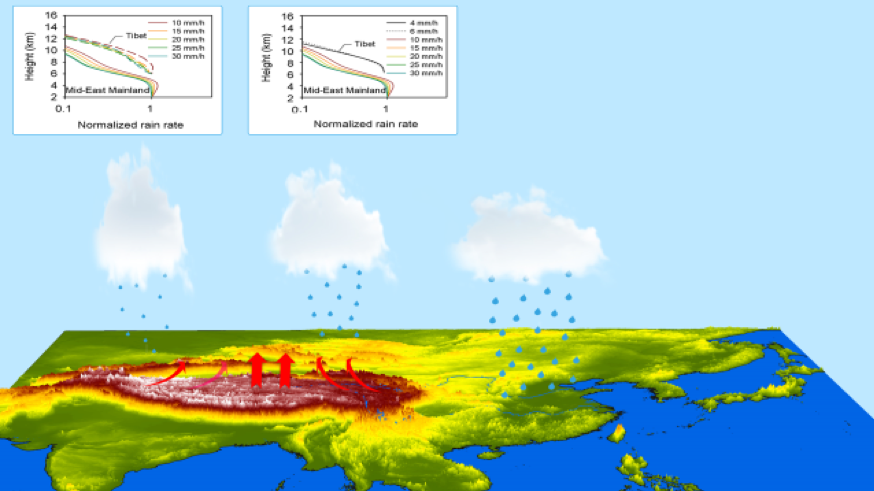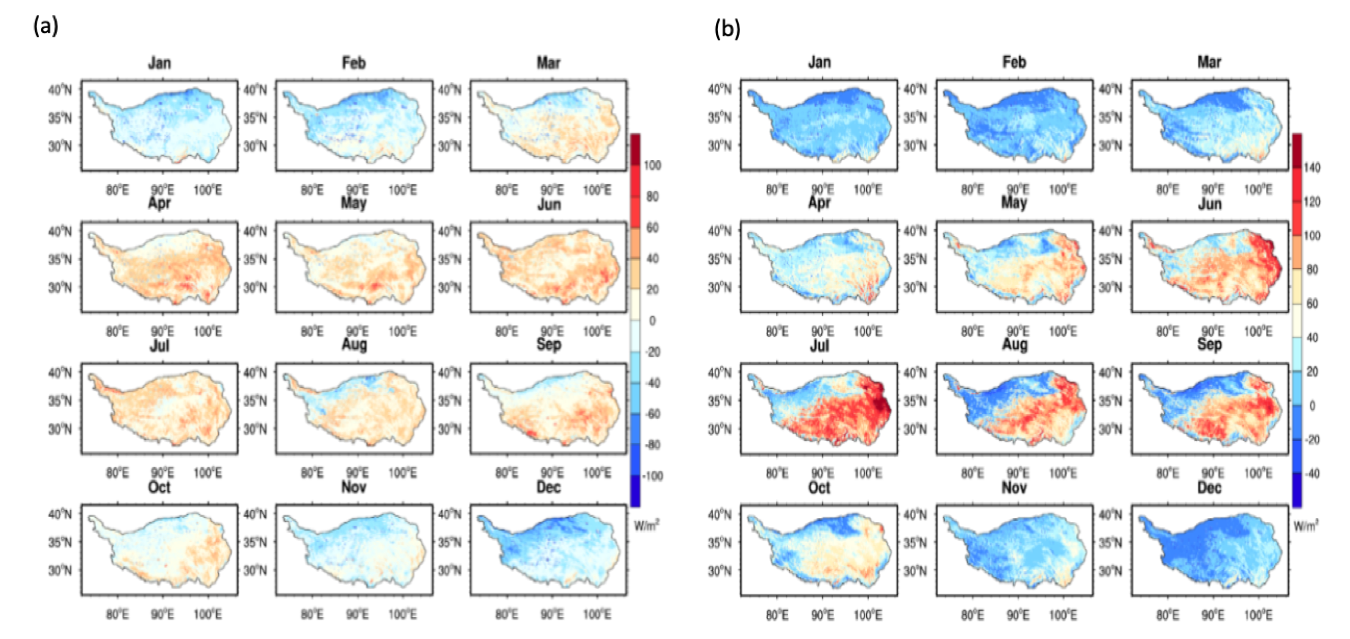| News |
| Latest news | |
| Int’l Cooperation activities | |
| Events & Announcement | |
| Recent Activities |
| Location: Home>News>Recent Activities |
| NSR: Land surface processes and summer cloud-precipitation characteristics in the Tibetan Plateau and their effects on downstream weather |
Land surface processes and summer cloud-precipitation characteristics in the Tibetan Plateau (TP) have significant impacts on downstream weather and climate changes. They are also the keys to understand Asian monsoon system and atmospheric circulation changes in the Northern Hemisphere. In order to improve the quantitative understanding of the land-atmosphere interaction on the TP, China and relevant international organizations have conducted many systematic atmospheric scientific experiments on the TP and very fruitful scientific understandings of land-atmosphere interactions have been achieved.  Figure 1. Schematic diagram of land-atmosphere interaction, cloud-precipitation and their impacts In a paper published in National Science Review (NSR), recent progresses in land-atmosphere interaction, cloud-precipitation characteristics and their impacts on downstream weather were systematically reviewed. The authors include Prof. Yaoming Ma (from Key Laboratory of Tibetan Environment Changes and Land Surface Processes, Institute of Tibetan Plateau Research, Chinese Academy of Sciences, CAS Center for Excellence in Tibetan Plateau Earth Sciences and University of Chinese Academy of Sciences), Prof. Yunfei Fu (from School of Earth and Space Sciences, University of Science and Technology of China) and other well-known scholars in related fields. The main conclusions were summarized as follows: (1) It was found that for the key characteristic parameters in land-atmosphere interaction, aerodynamic roughness length was one order of magnitude larger than thermodynamic roughness length in the TP. The excess resistance to heat transfer exhibited obvious diurnal variation. (2) Remote sensing parameterization schemes for multi-source satellites have been developed, which extended the 'point' land-atmosphere flux observation to the entire TP. The temporal resolution of estimated land surface heat fluxes was also improved from days to hours. In the context of TP warming and wetting, the sensible heat flux decreased overall while the latent heat flux increased from 2001 to 2012 (3) The precipitation wet biases modeled by WRF over the TP can be effectively reduced by taking turbulent orographic form drag of complex terrain into account. It was also revealed that soil frozen-thawing significantly affects the soil water and energy budget. It will further enhance the TP’s thermal forcing to the subtropical westerlies and affect stationary Rossby wave train propagation in middle latitudes. (4) Diurnal variations of cloud macroscopic and microphysical parameters, together with dynamical characteristics inside clouds were revealed. The vertical distributions of cloud phases and particle size in deep convective clouds were also identified. (5) It was found that the intensity and frequency of precipitation increased from the western TP towards the eastern and southeastern TP, while the storm top altitudes showed contrary trends. The weak deep convective precipitation was the dominant precipitation form in the TP. The thickness of the precipitation cloud was actually compressed by the TP terrain leading to the precipitation profiles difference between the TP and non-plateau regions. (6) It was revealed that the eastward propagation of convective systems caused by TP heating had profound impacts on the downstream rainstorms over the Yangtze River Basin. The mechanisms were mainly attributed to the interactions among the TP heating, South Asian High, and the western Pacific subtropical high.  Figure 2. Seasonal variations in sensible heat flux (a) and latent heat flux (b) in 2008 over the TP Despite great progresses, the following aspects are still challenging and deserve further systematic investigations. First, the weather systems in the TP should be rigorously followed to study the land-atmosphere energy and water exchanges, especially before and after the precipitation. The second is how to use cloud models and weather models to correctly simulate the physical processes of cloud and precipitation. The third is how to get an accurate latent heat profile of cloud precipitation in the TP from the observed data in order to evaluate the latent heat structure of the model. The fourth is to understand changes in the cloud thermodynamic structure during the eastward migration of cloud clusters in the TP, and how such changes can stimulate the severe convective weather downstream. The fifth is to investigate the climate effects of absorbing aerosols over the TP. This study was jointly supported by the National Natural Science Foundation of China (NSFC) and the Strategic Priority Research Program of Chinese Academy of Sciences (Pan-TPE). The paper with the title of “Land surface processes and summer cloud-precipitation characteristics in the Tibetan Plateau and their effects on downstream weather: a review and perspective” was recently published in National Science Review (NSR). Link to the article: https://doi.org/10.1093/nsr/nwz226 |
